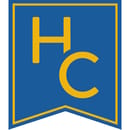A couple of weeks ago while scrolling through movie options, I decided to rewatch one of my favourite movies of all time, especially in honour of Black history month. Ever since my English teacher made us watch it in Grade 12, I have been in awe of Hidden Figures and the stories of 3 Black women in the 1960s who shattered all rules, laws and barriers between them and their love for space. In particular, Taraji P. Henson’s portrayal of NASA mathematician Katherine G. Johnson has since grown to become one of my favourite characters ever.
It never ceases to amaze me how Katherine Johnson really was the only mathematician whose calculations were trusted by astronaut John Glenn before his launch into space, and how a figure like this could go hidden. This is just one of the many crimes American history has committed against Black people, especially women. Nevertheless, these women never stopped teaching us the meaning of patience, strength and hope, and Katherine is no exception.
After graduating high school at 14, Katherine graduated from West Virginia State in 1937. Finding no research opportunities available for Black women, she became a schoolteacher. In 1940, the West Virginia State president picked Katherine as one of three Black students to study at the all-white West Virginia University. However, she couldn’t put her newly earned advanced mathematics degree to use when she found out she was pregnant with her first child. Katherine then put her dreams on pause for her family and teaching. That was until she heard that the NASA Langley Research Centre was hiring Black female mathematicians, and the rest is history.
For those of us who’ve watched the movie, we know that this was only the beginning of a long journey ahead. Mrs. Johnson’s roller coaster biography is what makes me wonder if anything would have made her give up. Because if research never worked, teaching sufficed. And when motherhood created a decades-long break in her career, it was no biggie! Because one day, Katherine would wake up one morning and decide she was going to bring us the moon. While even Katherine herself couldn’t inspire me to do mathematics for fun, she did teach me the significance of reaching for the stars, and having faith in achieving any dream, even if you have no idea how the hell you’re getting there.
After all of her invaluable contributions to NASA, I found it hilarious when Katherine was asked, in a 2016 interview, about her greatest accomplishments, and all she had to say was “I am 98. My greatest accomplishments, just staying alive.” If humbleness was a person, it would be Mrs.Johnson. Upon learning that NASA’s Langley Research Centre was opening a new building in her honour, she joked “You want my honest answer? I think they’re crazy!”. Katherine’s lack of wanting celebration for her accomplishments is so admirable to me. Because in MY honest opinion, if I had her kind of math skills, I’d think I’m the smartest person ever. And can you blame me? We literally use “rocket science” as an idiom for the hardest tasks imaginable to humankind. And yet one of the most esteemed contributors to the advancements of rocket science refers to her contributions as just “ordinary things”. Finding the balance between standing up for her rights as a Black woman while being the walking embodiment of humility seems to be no problem for her. “I don’t have a feeling of inferiority, never had,” she said, describing her NASA career. “I’m as good as anybody, but no better.”
Continuing with her thoughts on NASA’s new Katherine G. Johnson Computational Research Facility, Katherine was excited for how “it gives credit to everybody who helped. I didn’t do anything alone but try to get to the root of the question. And succeeded there.” To her, the biggest advantage wasn’t just the new building giving her credit, but to all the other hidden figures who deserved that recognition. Mrs. Johnson was the type of supportive friend and coworker whose goal was beyond reaching for the stars. It was making sure everyone got a ride. In university, Katherine would repeatedly ask her math professor questions, which left him confused since he knew she had the answers. When recalling the time her professor asked her why she would do this, Katherine revealed her response: “I said well, I can see they didn’t quite understand. You didn’t make it as clear to them as it was to me”. In a society obsessed with net worth, followers, and other competitive measures of success, we have much to learn from Mrs. Johnson. Especially us young women of colour need to remember to uplift each other and make sure that all opportunity and credit is given to each deserving individual.
Hard-work was Katherine’s middle name, and work was more than just financial support for her. It was the emotional support she needed with the passing of her first husband due to brain cancer and raising 3 girls as a single mother. This was before she married United States Army captain James Johnson. So what exactly was Katherine’s secret to pushing through 16-hour workdays? And what made work not just a task but something she needed to do for her well-being? Well, Mrs. Johnson had a very simple answer for that: “Like what you do; then you will do your best. If you don’t like it, shame on you.” After watching many of her interviews, I noticed that she repeatedly stressed the importance of simply loving your job. And she can prove her natural love for mathematics by remembering that it took exactly 68 steps to get from her childhood home in West Virginia to the local church. When asked about what other career path she would take if she had the chance Katherine had no response. With a confused expression she asked “Something else? Well there isn’t anything else”. As someone who couldn’t even understand my own math test from 11th grade when I discovered it under my bed, I would gladly disagree. There is so much more, there is art, music, writing, and whatever else our hearts desire. But the same wisdom that Katherine gives us applies everywhere. Pick something that you cannot imagine your life without, and you will surely do well.
A week ago, my 11-year-old sister built an airplane model for a class presentation. After the days upon days of ambitious gluing, breaking and re-gluing of wings and wheels, she finally landed an A+ which she was deliriously happy about. My parents even started jokingly asking if she wanted to be some sort of aerospace engineer, to which she responded yes. And it’s true, that if she works hard enough, nothing is stopping a little immigrant brown girl from becoming an engineer.
Even if it wasn’t always this way, many women in history built a world like this for us. Women like Katherine, who went from counting her steps to calculating life-saving trajectories, and she did it all as a Black woman in a time of segregation. I was deeply saddened when Katherine G. Johnson passed away almost a year ago on February 24th, 2020. Nevertheless, I’m overjoyed that she was finally able to see her contributions be appreciated, especially when she received the Presidential Medal of Freedom in 2015. And I will forever be grateful for all the lessons of passion, work ethic and humility that she gave us, for there is no better inspiration and motivation that I could possibly ask for.



